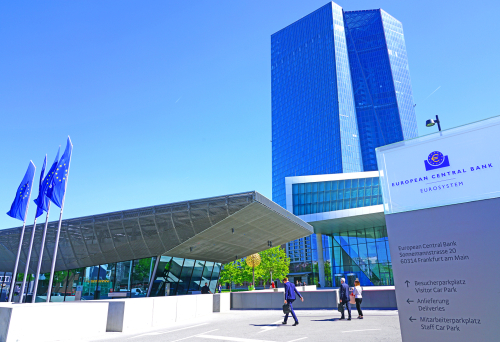
Europe | Monetary Policy & Inflation | Rates

Europe | Monetary Policy & Inflation | Rates
This article is only available to Macro Hive subscribers. Sign-up to receive world-class macro analysis with a daily curated newsletter, podcast, original content from award-winning researchers, cross market strategy, equity insights, trade ideas, crypto flow frameworks, academic paper summaries, explanation and analysis of market-moving events, community investor chat room, and more.
As we had warned in our pre-meeting preview the ECB leaned strongly hawkish to make up for its inability to take immediate action (due to sequencing). To a large extent they ticked most of the boxes in the potential hawkish-skew we had highlighted, only really failing to deliver on the APP end-date (Table 1).

The market clearly took the meeting’s result as strongly hawkish, duly pricing in even more tightening. 12-month pricing for ECB hikes currently sits within 50bps of the Fed. Approximately, the market priced path is now: 25bp in July, 50bp in September and October, 25bp in December, February, March and May (Chart 1). Whether this is credible, will determine largely upon whether the ECB hikes 50bp come September.
EGB curves have seen a strong bear-flattening since the meeting (Chart 2). This has been driven by both higher hike expectations, and a disappointment at the ECB comments on their ‘anti-fragmentation’, ‘crisis’ tool (which seems to be based right now on a skewing of PEPP reinvestments). Comments from Lagarde in the press conference, and Villeroy last Friday have done little to temper the move.

The explicit squashing of the chances for a 50bp hike in July came alongside the prospect for 50bp or more to be delivered in September. This would be conditional on the persistence or deterioration of the medium-term inflation outlook – in other words if the 2024 forecasts for headline and core inflation in 2024 are at least 2.1% and 2.4, respectively.
The ECB’s updated forecasts make it is clear that sustained growth in compensation per employee (which was raised +0.8ppt from March’s forecasts for 2024) will be important in determining whether this condition is met. Important to this will be the outlook for 2024 GDP growth, which was raised 0.5ppt from March, driven by a 0.6ppt rise in private consumption, and a 0.9ppt rise in GFC.
On this front, the importance of timely business and consumer surveys has risen, in particular those related to future economic activity and employment expectations. As it stands, sector order books, and consumer confidence are both in decline, while employment surveys are starting to show signs of flagging (Charts 3 & 4). Further signs of deterioration here should be closely monitored.

Spring sale - Prime Membership only £3 for 3 months! Get trade ideas and macro insights now
Your subscription has been successfully canceled.
Discount Applied - Your subscription has now updated with Coupon and from next payment Discount will be applied.